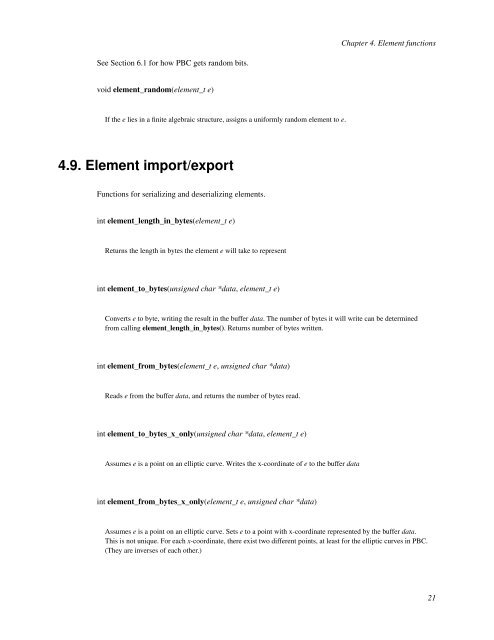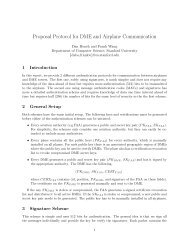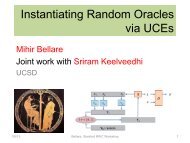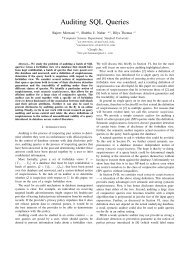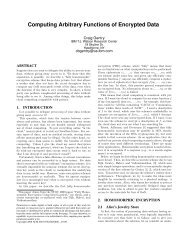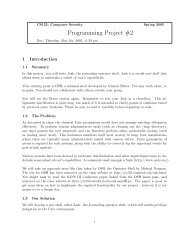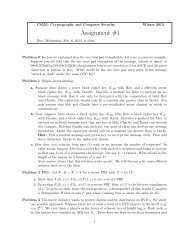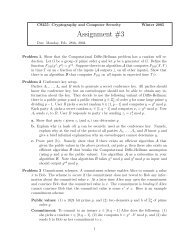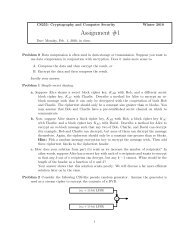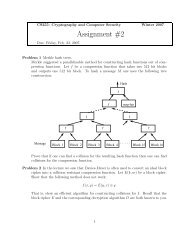PBC Library Manual 0.5.11 - Stanford Crypto Group
PBC Library Manual 0.5.11 - Stanford Crypto Group
PBC Library Manual 0.5.11 - Stanford Crypto Group
You also want an ePaper? Increase the reach of your titles
YUMPU automatically turns print PDFs into web optimized ePapers that Google loves.
See Section 6.1 for how <strong>PBC</strong> gets random bits.<br />
void element_random(element_t e)<br />
If the e lies in a finite algebraic structure, assigns a uniformly random element to e.<br />
4.9. Element import/export<br />
Functions for serializing and deserializing elements.<br />
int element_length_in_bytes(element_t e)<br />
Returns the length in bytes the element e will take to represent<br />
int element_to_bytes(unsigned char *data, element_t e)<br />
Chapter 4. Element functions<br />
Converts e to byte, writing the result in the buffer data. The number of bytes it will write can be determined<br />
from calling element_length_in_bytes(). Returns number of bytes written.<br />
int element_from_bytes(element_t e, unsigned char *data)<br />
Reads e from the buffer data, and returns the number of bytes read.<br />
int element_to_bytes_x_only(unsigned char *data, element_t e)<br />
Assumes e is a point on an elliptic curve. Writes the x-coordinate of e to the buffer data<br />
int element_from_bytes_x_only(element_t e, unsigned char *data)<br />
Assumes e is a point on an elliptic curve. Sets e to a point with x-coordinate represented by the buffer data.<br />
This is not unique. For each x-coordinate, there exist two different points, at least for the elliptic curves in <strong>PBC</strong>.<br />
(They are inverses of each other.)<br />
21


